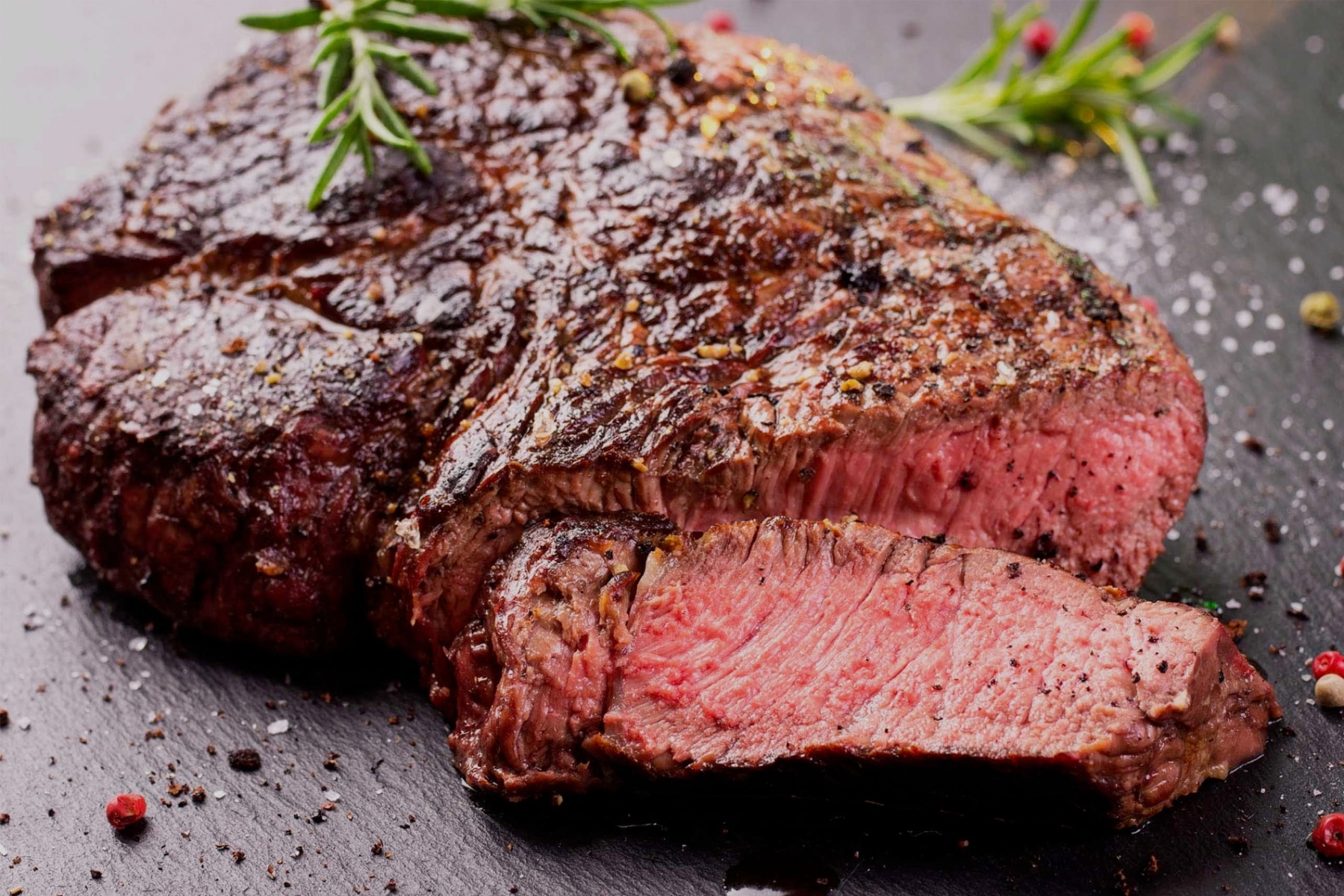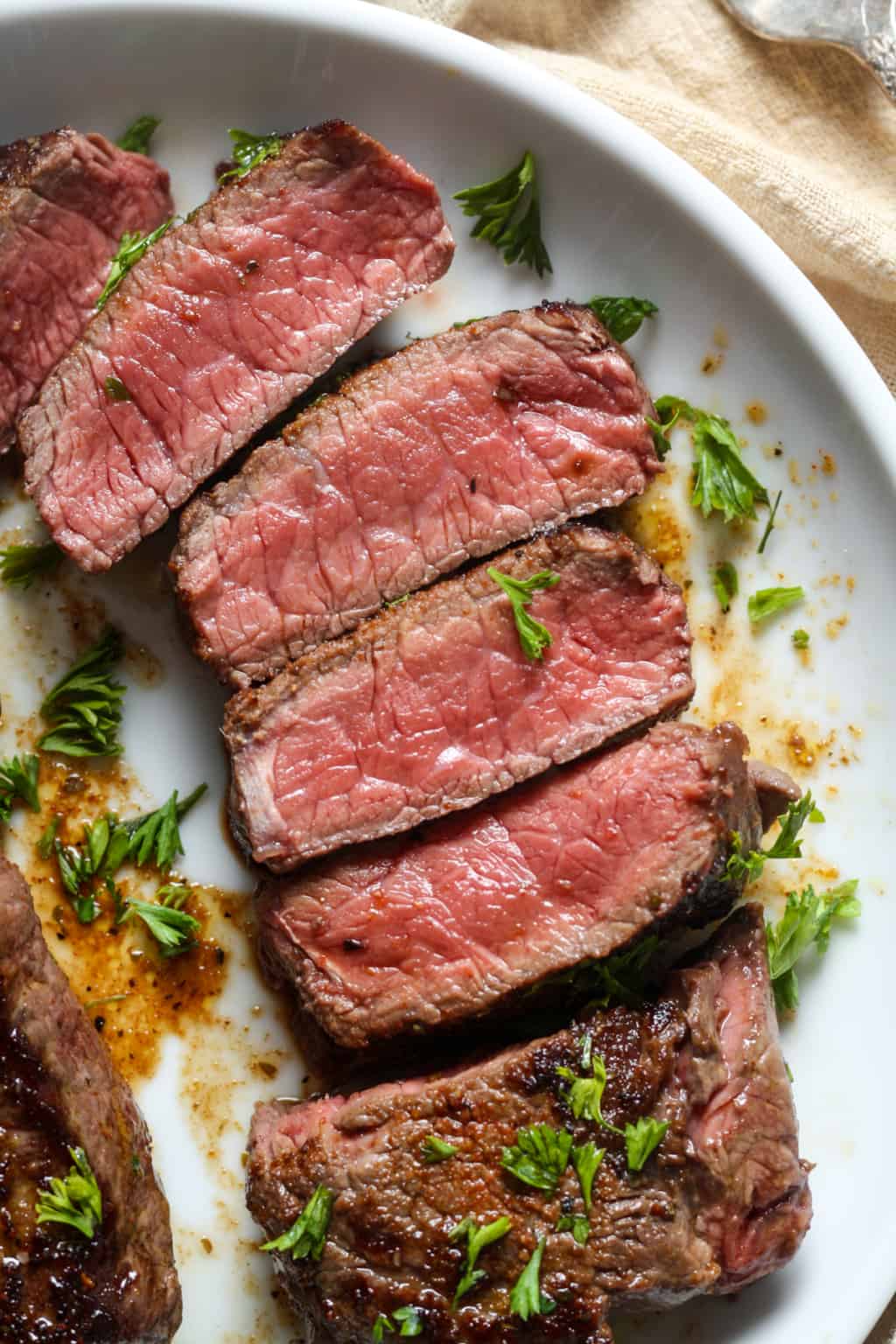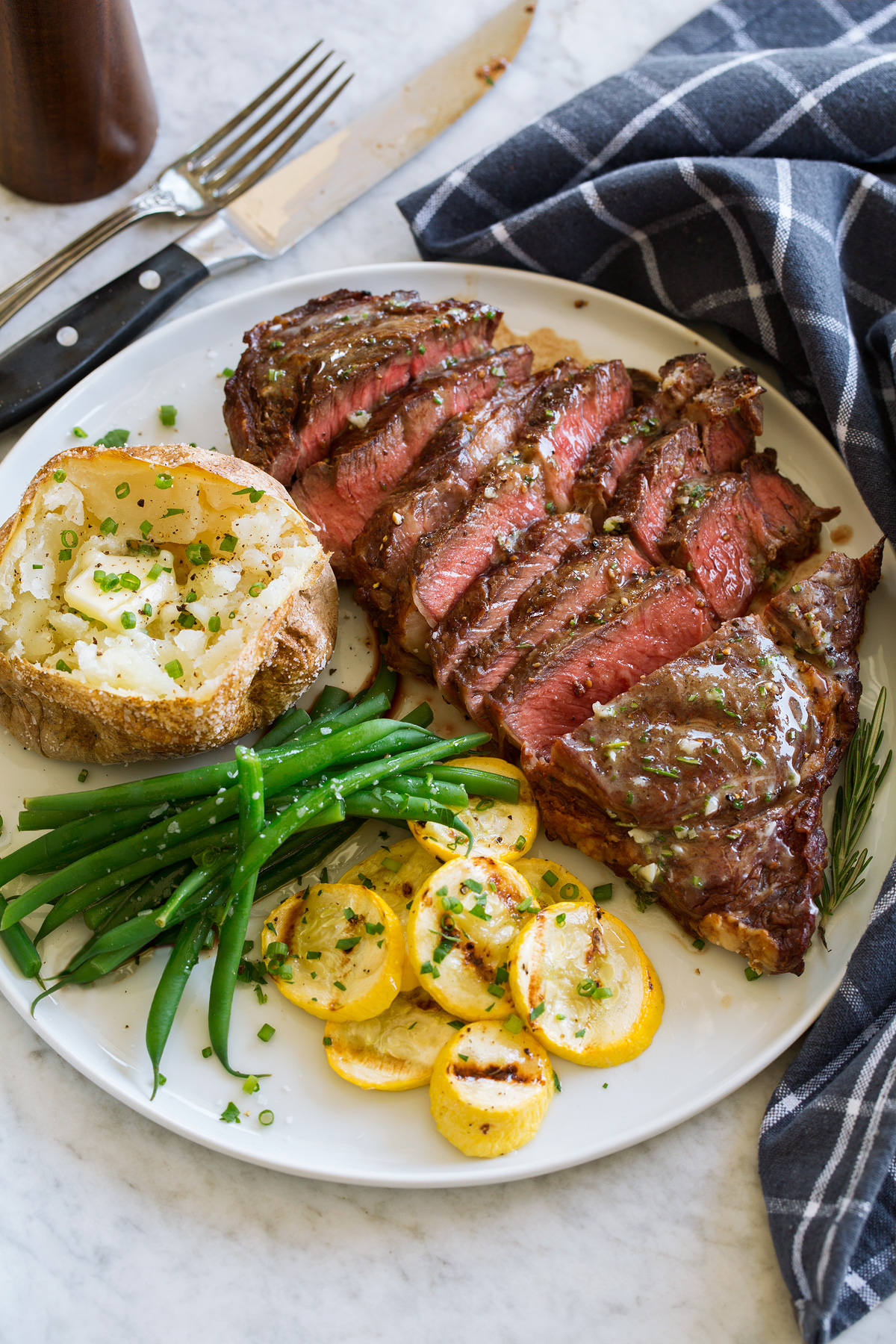Steak Age - The Secret To Better Beef
There's a lot of talk about how to make a great piece of beef even better, and one big part of that conversation often turns to something called "steak age." It's not about how old the cow was, but rather about how long the meat itself has been allowed to rest and change after being cut. This process, it really does something special, helping to bring out deep flavors and a texture that's just wonderfully soft. You see, it's a technique that many people who work with food, from cooks to those who prepare meat, say is a truly important step for getting that perfect taste.
When we talk about letting beef get a little older, we're actually looking at a few different ways to do it. Some folks let the meat sit out in the open air, carefully watched, while others might wrap it up tight or even cover it in butter. Each way has its own special touch, and they all work to make the beef taste more like beef, but with a richer, more intense character. It's a bit like how a good wine gets better over time, you know, developing more complex tastes and smells. This idea of letting meat mature is something that makes a big difference for anyone who enjoys a really good steak.
This discussion will walk you through the different ways people go about aging beef, what happens to the meat during this time, and why it matters so much for the final taste and feel. We'll also touch on how some of these methods might even be done right there in your own kitchen, with some guidance from people who know a lot about food. It's all about getting that truly special piece of beef for your table, something that will really stand out.
Table of Contents
- What's the Big Deal with Steak Age?
- How Do Folks Age Steak, Anyway?
- Can You Really Age Steak at Home? Tips for Your Own Steak Age Project
- Why Do Experts Talk So Much About Steak Age?
- Getting Your Steak Ready - Beyond Just Steak Age
- What About Those Less Common Cuts and Their Steak Age Potential?
- Cooking Your Steak Age Masterpiece
- Gravy and Goodness for Your Steak Age Creation
What's the Big Deal with Steak Age?
When people talk about letting beef get older, they're really talking about a process that makes the meat much better. It's not about the animal's lifetime, but about how the meat itself is kept after it's been cut. This period of waiting allows the meat to become wonderfully soft and to develop a much deeper, more satisfying taste. It's a way to change a good piece of beef into something truly special, something that has a lot more character on your plate. You know, that kind of rich, beefy flavor that makes you want more.
The changes that happen during this time are pretty interesting. Inside the beef, there are natural elements that start to work on the muscle fibers. These elements slowly break down some of the tougher bits, which is why the meat gets so much softer. And as some of the moisture leaves the meat, the flavors that are already there become much more concentrated. It's like turning up the volume on the beef's natural taste. This means that a steak that has been given some time to age will have a chew that's easy and a taste that's really full, something you can truly savor, so it's almost a transformation.
Professional cooks and people who work with meat often say that this resting period is a very important step. They know that without it, a steak just won't have that same level of tenderness or that rich, complex flavor. It's a careful balance of time and conditions that helps the beef reach its best potential. So, when you hear about "steak age," it's about making sure your beef is as delightful as it can be, a true treat for your taste buds.
- Pirate Software Twitter
- Myers Punannieannie Bbyanni
- Huge Tits Twitter
- Turtle Boy Twitter
- Colegialas En Twitter
How Do Folks Age Steak, Anyway?
There are quite a few different approaches to letting beef get older, each with its own special way of doing things. Some people choose to leave a cut of beef out in the open air, in a place where the temperature and moisture are carefully looked after. This is often called "dry aging." Other methods might involve wrapping the meat up very tightly, or even coating it in something like butter. Each of these ways helps the beef change in different ways, all aimed at making it softer and more flavorful. It's really interesting to see the variety of techniques people use.
One of the most common ways people prepare beef to be softer and more flavorful is by putting it into a tight covering, like a shrink wrap. This is known as "wet aging." Most of the beef you find in stores has gone through this process. It keeps the meat's moisture in, allowing the natural juices to work on the muscle fibers, making them less firm. This way of letting the beef mature is very popular because it helps to give the meat a good feel when you chew it and a pleasant taste without needing a lot of special equipment. It's a simple yet effective way to improve the meat, you know, for everyday enjoyment.
Then there's "dry aging," which is a bit different. This is where the beef is left uncovered in a controlled environment, usually a cool place with just the right amount of moisture in the air. As the meat sits, some of its water content slowly goes away, which makes the beefy flavor much more intense. Also, the natural elements in the meat start to break down the connective tissues, making the steak wonderfully soft. This method is often said to give beef a very special, nutty taste and a texture that's incredibly pleasing. It's a process that takes more care, but many people think the results are worth the extra effort for a truly distinct steak age outcome.
Can You Really Age Steak at Home? Tips for Your Own Steak Age Project
The idea of making your own beef softer and more flavorful right in your kitchen might seem a little tricky, but it's something many home cooks consider. While professional places have special rooms for this, there are ways to try a "steak age" project at home. It does take some care and attention to make sure everything is just right, because you want the meat to get better, not go bad. People who know a lot about food say it's possible, but you need to follow some clear steps. It's not something you just throw in the fridge and forget about, you know.
For those looking to try dry aging a piece of beef in their own kitchen, it can be as simple as following four main steps. First, you need to pick a good cut of meat. Then, you prepare it by making sure it's clean and ready for its resting period. After that, you place it in your refrigerator, making sure there's good air movement around it. You also need to keep an eye on it for a certain amount of time. This approach, while not as precise as a professional setup, can still help you get a piece of beef that's softer and has a more concentrated flavor. It's a way to experiment with "steak age" without needing a lot of fancy gear.
For people who are really serious about trying "steak age" at home, there are special pieces of equipment available, like dry age fridges or what some call "Steak lockers." These devices are made to keep the temperature and moisture levels just right, making the whole process much more straightforward. They take a lot of the guesswork out of it, allowing you to get results that are closer to what a professional might achieve. Our guidance on using these special fridges helps make the dry aging of steaks a clear and simple task. It really takes the worry out of it, so you can focus on enjoying the beef later.
Why Do Experts Talk So Much About Steak Age?
People who spend their lives studying food, working with meat, and cooking for others often speak a great deal about why dry aging beef is such a good idea. They explain that this method does something special to the meat, making it taste much more like beef, but with a deeper, richer character. They also point out that it helps the meat become wonderfully soft, so it's easy to chew and very pleasant to eat. It's not just a trend; there's a real reason behind why they believe in it so strongly. They've seen the difference it makes firsthand, which is that it truly changes the beef.
The science behind why dry aging beef works so well is quite interesting. As the meat sits in a controlled environment, two main things happen. First, some of the water in the beef slowly evaporates. This doesn't just make the meat lighter; it also means that the beef's natural flavors become more concentrated. Think of it like reducing a sauce to make its taste stronger. Second, the natural enzymes that are already in the meat start to do their work. These enzymes gently break down the tougher parts of the muscle fibers and connective tissues. This breakdown is what makes the beef so much more tender. So, it's a combination of concentrated flavor and a softer feel that makes dry aging a very sought-after "steak age" process.
Getting Your Steak Ready - Beyond Just Steak Age
Even after you've considered the idea of "steak age" and perhaps even tried it, getting your beef ready for cooking is another important step. A good piece of beef is a wonderful choice for a quick dinner during the week, especially if you're looking for something that has a lot of good protein. It's a simple way to put a satisfying meal on the table without too much fuss. You know, it's something that feels a bit special but can still be part of a regular evening.
Unlike preparing chicken, which often takes a bit longer to cook all the way through, beef can be ready in less time. Many people enjoy their beef cooked to a medium level, or even a little less done, like medium-rare. This means you don't have to wait around for ages for your meal to be ready. It's a quick way to get a warm, tasty dish on your plate, which is great when you're short on time. So, that's one of the nice things about choosing beef for dinner.
To give your beef an extra layer of taste before cooking, you can mix up a simple marinade. Imagine combining some Worcestershire sauce, a bit of Dijon mustard, a touch of brown sugar, some olive oil, and a little vinegar in a good-sized bowl. Whisk it all together until it's well blended. Then, you add your beef to this mixture and toss it around so that every piece gets a good coating. This helps the flavors sink into the meat, making it even more delicious when it's cooked. It's a nice way to prepare your "steak age" beef for its final cooking.
What About Those Less Common Cuts and Their Steak Age Potential?
Sometimes, the best finds are the ones that aren't immediately obvious. Hanger steak is a pretty good example of this; it's a bit of a hidden treasure, and it often costs less than some of the more famous cuts. When it's first taken from the animal, it can look a little rough around the edges, almost gnarled. But people who prepare meat for a living, and those who really know their way around beef, understand its true value. They know that despite its initial appearance, it's a piece of meat that offers a lot of flavor and a good chew. It's worth seeking out, you know, for something a little different.
This cut, the hanger steak, is known for its deep, beefy taste. It comes from a part of the animal that works hard, which means it has a lot of flavor. While it might not be the first thing people think of when they consider "steak age," it certainly benefits from careful cooking. It's a cut that can be transformed into something truly special with the right touch. Those who are in the know appreciate it for its unique qualities and its ability to deliver a satisfying meal without breaking the bank. It's a smart choice for someone looking for good taste and value.
Cooking Your Steak Age Masterpiece
Once your beef is ready, whether it's been aged or just prepared, cooking it can be surprisingly simple. A very straightforward approach takes about 30 minutes from start to finish. All you really need is your beef, a little cooking oil, and some salt and pepper. These basic ingredients are often all it takes to bring out the best in a good piece of meat. Just remember that the time it takes to cook will change depending on how rare or well-done you like your beef. It's all about getting it just right for your own taste, you know, for that perfect bite.
If you're cooking your beef on the stovetop, grab a large pan that has straight sides and place it over medium heat. Add a bit of oil to the pan. Once the oil is warm, put in your beef, and if you like, some bell pepper too. Cook the beef until it's warmed through and reaches the level of doneness you prefer. This usually takes about 2 to 3 minutes on each side, depending on the thickness of the meat. It's a quick way to get a lovely sear on the outside while keeping the inside just as you like it. So, that's a good way to get started.
For those who prefer grilling, especially with a gas grill, you'll want to set it up a certain way. Turn the burners on one side of the grill to a high setting, and the burners on the other side to a low setting. This creates different heat zones, allowing you to sear the beef quickly on the hot side and then move it to the cooler side to finish cooking more gently. This method helps you get those nice grill marks and a good crust on the outside, while still having control over the inside doneness. It's a smart way to manage the heat for your "steak age" creation.
Gravy and Goodness for Your Steak Age Creation
After your beef is cooked, especially if it has those lovely seared marks, the little lines and crannies on the outside are just perfect for holding onto something rich and tasty, like onion gravy. The way the beef cooks creates these small spaces that can really soak up the flavor of a good sauce. It makes every bite even more enjoyable, adding another layer of taste to your already delicious beef. It's a simple pairing that makes a big difference to the meal.
Some people enjoy their beef with a classic side like chicken fried steak with gravy. While the name might sound like chicken, it's actually a piece of beef that's been prepared in a way similar to fried chicken, often served with a creamy sauce. It's a comforting and hearty dish that pairs wonderfully with the rich taste of beef. So, whether it's a simple gravy or a full-on chicken fried steak, adding a good sauce can truly complete your meal, making your "steak age" effort even more rewarding.

How to Cook Steak to Perfection - 5 Easy Methods | Man of Many

Top Sirloin Steak - Organically Addison

Perfect Grilled Steak